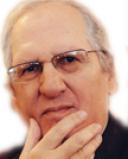Psychopathy
Masks of Sanity (Part Four): What is a Psychopath?
The term "psychopath" is being overused by expert commentators.
Posted August 31, 2009
If you ever watch television shows like Nancy Grace and Issues with Jane Velez-Mitchell, you have probably seen criminal profiler Pat Brown and numerous other experts commenting on sensational cases like the recent shocking murder here in Los Angeles by former reality star Ryan Jenkins of his ex-wife, model Jasmine Fiore, after which he hanged himself in a Canadian hotel room. And you may have noticed that, especially for profiler Pat Brown, almost all violent offenders seem to be "psychopaths." Ms. Brown, who, so far as I know is not a mental health professional, is certainly not the only one guilty of such diagnostic overgeneralization: Guest panels commonly include clinical psychologists and psychiatrists making similar proclamations. But seasoned forensic psychologists know that it is dangerous to leap to such diagnostic conclusions prior to evaluating the criminal defendant and reviewing all the facts in such cases. For example, do Ryan Jenkins' gruesome efforts to conceal his murdered victim's identity by removing both her teeth and fingers and then stuffing her into a suitcase, or Chris Coleman's apparently premeditated slaughter of his wife and two children while they slept (see my previous post), or Casey Anthony's alleged killing of her own daughter (see my prior posts) necessarily make them psychopaths? Possibly. But it seems that for some of these commentators, the facile label of "psychopath" can be pejoratively pinned onto just about any bad behavior--especially when it involves extreme violence, such as the recent shootings of random women at a fitness club in Pittsburgh (see my previous post.) Meanwhile, did you know that the American Psychiatric Association's official diagnostic manual (DSM-IV-TR) does not even consider "psychopathy" a legitimate formal psychiatric diagnosis?
The term psychopath has been kicking around since the nineteenth-century, but was popularized by psychiatrist Hervey Cleckley in his 1941 classic The Mask of Sanity: An Attempt to Clarify Some Issues About the So-Called Psychopathic Personality. For Dr. Cleckley, the psychopathic personality was initially defined by a relatively high-functioning, aggressively narcissistic, extraverted persona concealing an antisocial and latent psychotic core. Whether most psychopaths are truly psychotic beneath their affable, charming, manipulative mask is dubious, as Cleckley later recognized, though some may in fact, like severe borderline, paranoid or schizotypal personalities, be compensated psychotics. Someone like Charles Manson (see my prior posts) may exemplify this semi-psychotic type. Based on Cleckely's conceptualization, psychologist Robert Hare developed the Psychopathy Check List (PCL-R), designed to be administered by a trained mental health professional to detect and measure the presence of psychopathy. The term "psychopath" was replaced at some point in psychiatry by "sociopath," in part to try to lessen its social stigma. The World Health Organization refers diagnostically to such individuals as suffering from Dissocial Personality Disorder. But the DSM-IV-TR, the most widely accepted and utilized psychiatric diagnostic system today, employs neither of these three terms, preferring deliberately instead to dub this troublesome syndrome Antisocial Personality Disorder. So any time you hear the terms psychopath, sociopath, asocial, amoral or dissocial personality, the appropriate corresponding DSM diagnosis may (or may not) be Antisocial Personality Disorder.
The diagnosis of Antisocial Personality Disorder focuses primarily on observable or documented long-standing patterns of behavior such as disregard for social norms, lying, impulsivity, irresponsibility, recklessness, cruelty, violence, law-breaking, lack of guilt or remorse, etc. Psychopathy or Dissocial Personality Disorder emphasize somewhat more subjective, qualitative and inferred traits like lack of caring or empathy, easily formed but superficial interpersonal attachments, low tolerance for frustration, chronically irritable mood, absence of conscience, failure to learn from negative consequences, and defensive projection of blame onto others. Hare's PCL-R test looks for specific characteristics such as glibness or charismatic charm, narcissistic grandiosity, need for constant stimulation, shallow affect, parasitic lifestyle, sexual promiscuity, multiple brief marriages, and extreme manipulativeness or deceitfulness. Antisocial Personality Disorder incorporates most of these symptoms and traits into its diagnostic criteria. One major difference, however, is that the DSM-IV-TR requires the presence of antisocial behavior in the form of what it calls Conduct Disorder ( a pattern of destructive, aggressive, deceitful, cruel and socially defiant behavior seen as a prelude to APD in childhood and/or adolescence) with onset before the age of fifteen, and that the person receiving this diagnosis be at least eighteen years of age. ICD-10, the international diagnostic system of the World Health Organization, acknowledges a prior history of Conduct Disorder as being common, but not invariably so, and therefore not requisite to make the diagnosis of Dissocial Personality Disorder.
As we have seen in certain recent cases like that of the "Craig's List Killer" (see my prior posting), it may be that some individuals are particularly skilled at masking their sociopathy and at cleverly evading detection--at least up to a point--and present no clear history of Conduct Disorder during childhood or adolescence. But I would argue that even in such unusual cases, antisocial behavior does not spring fully formed from the head of Zeus. And, if it does, it may be due to something other than psychopathy. The specific diagnostic criteria set forth by DSM-IV-TR make it clear that psychopathy, sociopathy, dissocial or antisocial personality disorder cannot and should not ever be diagnosed in a vacuum on the basis of a violent crime without having concrete evidence of there being a "pervasive pattern of disregard for and violation of the rights of others occurring since age 15 years." When conducting forensic evaluations of violent offenders, gathering such behavioral history is prerequisite to making a diagnosis of Antisocial Personality Disorder, as is making sure the defendant meets all the minimal diagnostic criteria for this severely stigmatizing mental disorder. And yes, contrary to what certain expert commentators proclaim, Antisocial Personality Disorder--by whatever name one uses--is a real mental disorder, and a very severe, dangerous and debilitating one at that, as Cleckley himself insisted.
The knee-jerk reaction of calling all violent offenders "psychopaths" is inaccurate, irresponsible, misleading and unethical. According to the Handbook of (Forensic) Psychology (2003), "there are many ways that someone can be at high risk for violence that are unrelated to psychopathy.. . . This is especially true," it continues, in cases of "spousal assault, stalking and sexual violence, where violence may be related more to disturbances of normal attachment processes rather than the pathological lack of attachment associated with psychopathy." Indeed, there are a multitude of mental disorders associated with violent behavior, including substance abuse or dependence, bipolar disorder, dissociative disorders, narcissistic and paranoid personality disorder, and psychotic disorders. Violent behavior is multi-determined, and cannot be simplistically reduced to or conveniently explained away by glibly dismissing all such offenders as "psychopaths." In reality, the bulk of violent behavior is not engaged in by individuals meeting the current diagnostic criteria for Antisocial Personality Disorder. Psychopathy is, in my view, just one of many anger disorders, though the majority of these disorders remain officially unrecognized. (See, for example, my discussion in previous postings of the newly proposed diagnosis of Posttraumatic Embitterment Disorder, and on anger disorder in general.)
Equally irresponsible is the matter-of-fact assertion by some commentators that violent offenders, whom they view as psychopaths, can never be helped by therapeutic intervention. The truth is that most reports of therapeutic failures with psychopaths tend to be anecdotal. Personality disorders of any kind are notoriously difficult to treat briefly, requiring intensive, long-term psychotherapy by expert clinicians. According to forensic psychologists James Hemphill and Stephen Hart (2003), there have to date been no well-controlled and sophisticated studies of structured therapeutic treatment programs for psychopaths. Part of the failure in rehabilitating such dangerous individuals has to do, in my view, with our inability as mental health professionals to recognize and treat psychopathy or APD as fundamentally an anger disorder. (See my previous posts.) These are, without exception, profoundly embittered, resentful, angry and narcissistically wounded individuals. Violent antisocial offenders are mainly made, not born. Future research on treating this population needs to focus on acknowledging their resentment and confronting the roots of their pathological rage against authority and society in general, teaching them to redirect some of this anger into more constructive activity.
Psychiatric diagnosis is a difficult and highly skilled process, requiring years of clinical training and experience, and should never be engaged in by anyone not formally educated and licensed to do so. Still, when it comes right down to it, whether we view a violent offender as suffering from antisocial or dissocial personality disorder, sociopathy or psychopathy, what we are really doing is trying to make sense of evil by identifying and naming it. But we cannot dismiss human evil simply by calling those who commit it some epithet such as "psychopath." Indeed, when used glibly and indiscriminately, the term" psychopath" is merely a means of avoiding or projecting the problem of evil and the inherent potentiality for evil in us all. It would be a dangerous error to naively comfort ourselves with thinking that so-called psychopaths are the only ones among us capable of evil deeds. Were the vast majority of German citizens perpetrating the Nazi holocaust all depraved psychopaths? How about the otherwise law-abiding, stable, responsible person who suddenly commits a violent crime of passion? Evil is an ever-present potentiality in each of us, given the right temptation, threats and circumstances. "Psychopaths" are not the sole purveyors of evil. But by better understanding the angry, resentful, bitter roots of psychopathy, we will be better prepared to deal with and reduce the pervasive and insidious problem of human destructiveness and violence.
Parts of this posting were derived from (and are expanded upon in) Dr. Diamond's article "Violence as Secular Evil: Forensic Evaluation and Treatment of Violent Offenders from the Viewpoint of Existential Depth Psychology" (2003), which was subsequently published in slightly revised form in the textbook Forensic Psychiatry: Influences of Evil (2005).


